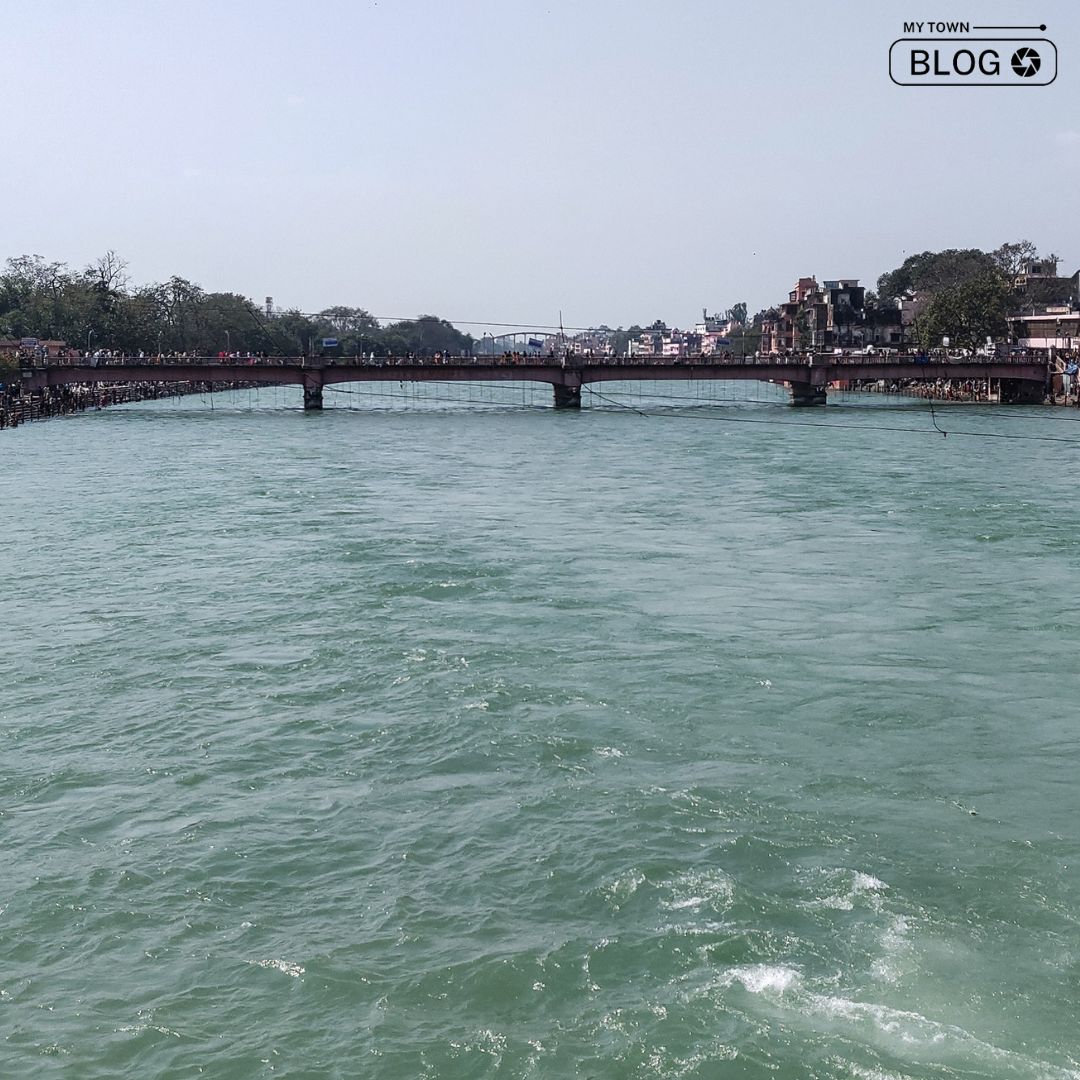India, a land of diverse landscapes and rich natural beauty, is blessed with a network of remarkable rivers that crisscross its vast expanse. These rivers not only serve as lifelines for countless communities but also offer breathtaking vistas of nature’s splendor. In this exploration of the Top 10 Longest Rivers in India. We embark on a journey to unveil the grandeur and significance of these mighty waterways that have played a pivotal role in shaping the subcontinent’s history, culture, and ecology. Join us as we navigate through the awe-inspiring world of India’s longest rivers, each with its own unique story to tell.
Here is a Compilation of India’s Longest Rivers
| Sr. No. | Name of Longest Rivers in India | Length in India (km) | Total Length (km) |
| 1. | Ganga | 2525 | 2525 |
| 2. | Godavari | 1465 | 1465 |
| 3. | Krishna | 1400 | 1400 |
| 4. | Yamuna | 1376 | 1376 |
| 5. | Narmada | 1312 | 1312 |
| 6. | Indus | 1114 | 3180 |
| 7. | Brahmaputra | 916 | 2900 |
| 8. | Mahanadi | 890 | 890 |
| 9. | Kaveri | 800 | 800 |
| 10. | Tapti | 724 | 724 |
Ganges River
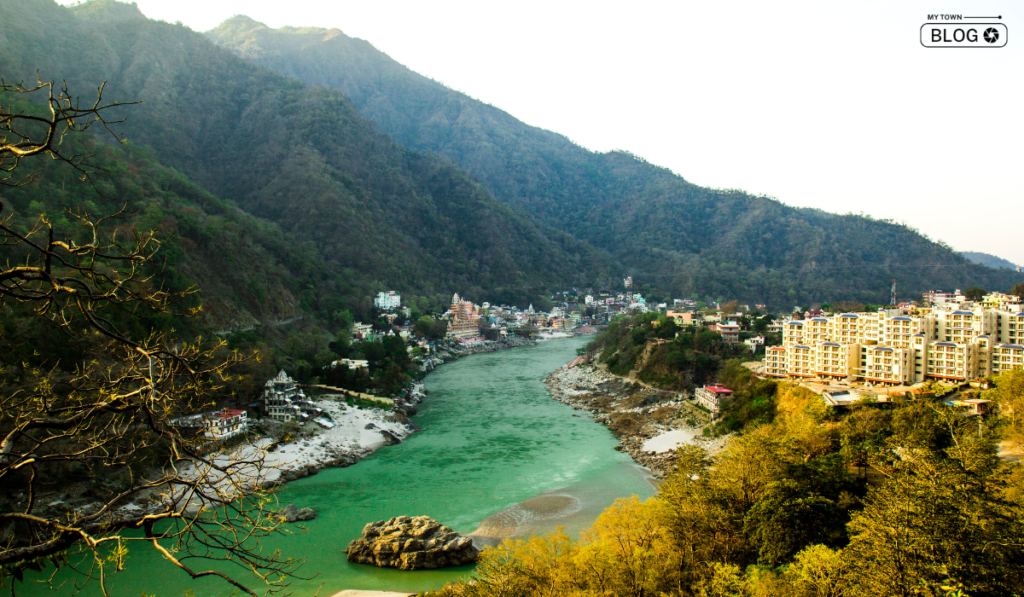
Revered as the Ganges in India, the Ganges stands as the most sacred river in Hindu belief and holds the distinction of being the longest river within the Indian subcontinent. It boasts the title of the longest river in India, stretching across an impressive distance of 2525 kilometers.
This mighty river is not only culturally significant but also a thriving ecosystem. Housing a diverse range of wildlife, including 140 fish species, 90 land and water proficient species, the gharial, and the Ganges river dolphin, some of which have earned a spot on the IUCN’s endangered list.
The Ganges is fed by several major tributaries, including the Gomti, Ghaghara, Yamuna, Son, Gandak, and Koshi rivers. Its journey begins at the pristine Gangotri glacier and meanders through several Indian states, namely Uttarakhand, Bihar, Uttar Pradesh, and West Bengal, before gracefully discharging its waters into the Bay of Bengal.
Godavari River
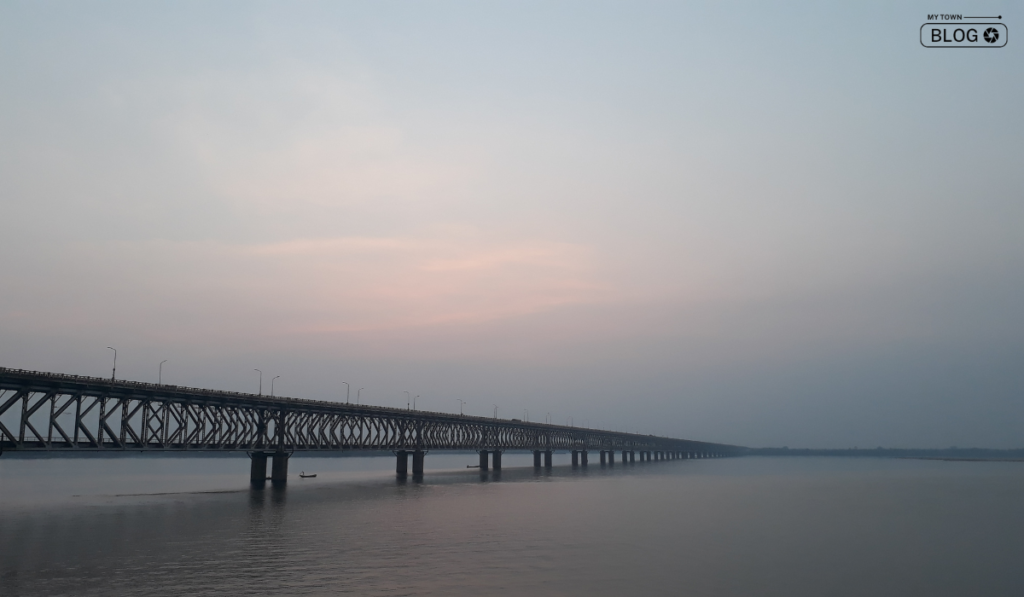
The Godavari, often referred to as the Dakshinganga or South Ganges, proudly claims the title of India’s second-longest river. Beyond its geographical significance, the Godavari holds profound spiritual importance for Hindus. With its banks dotted with revered pilgrimage sites that have attracted travellers for countless years.
Stretching across a total distance of 1464 kilometers, this majestic river is nourished by several significant left bank tributaries, including the Pranhita, Indravati, Purna, and Sabari Rivers. Its journey commences near Nashik, Maharashtra, a place steeped in cultural heritage.
Along its course, the Godavari flows through cities such as Nasik, Nanded, and Rajahmundry before ultimately merging its waters with the Bay of Bengal. As we explore India’s remarkable rivers. The Godavari emerges as a testament to the cultural, historical, and geographical diversity that defines the subcontinent.
Krishna River
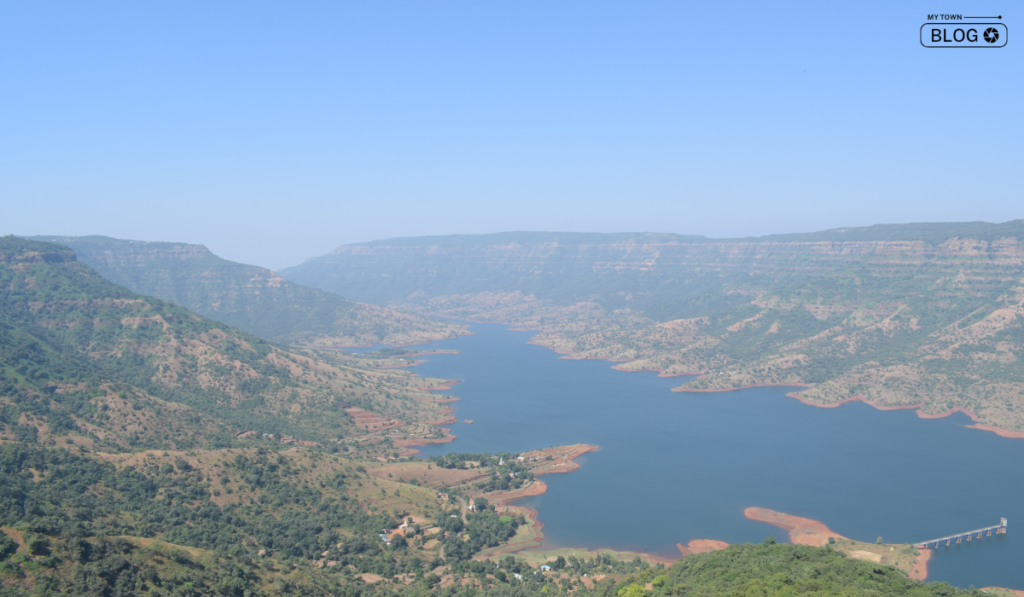
The Krishna River, standing as the third-longest river in India in terms of length and the fourth-longest in terms of water inflow and river basin area, is a prominent watercourse. That weaves through the Indian heartland. With a total length of 1400 kilometres. The Krishna River serves as a vital irrigation source for the states of Telangana, Maharashtra, Karnataka, and Andhra Pradesh.
The river’s significance extends beyond its length, as it boasts a network of principal tributaries, including the Dudhaganga, Bhima, Panchganga, Ghataprabha, and Tungabhadra rivers. Contributing to its bountiful flow. Originating in the Western Ghats at an elevation of approximately 64 kilometres. From the Arabian Sea and about 1337 metres north of Mahabaleshwar.
The Krishna River meanders through the states of Maharashtra, Telangana, Karnataka, and Andhra Pradesh. As we traverse the landscapes of India’s magnificent rivers. The Krishna River shines as a lifeline, nurturing agricultural lands and communities along its course.
Yamuna River
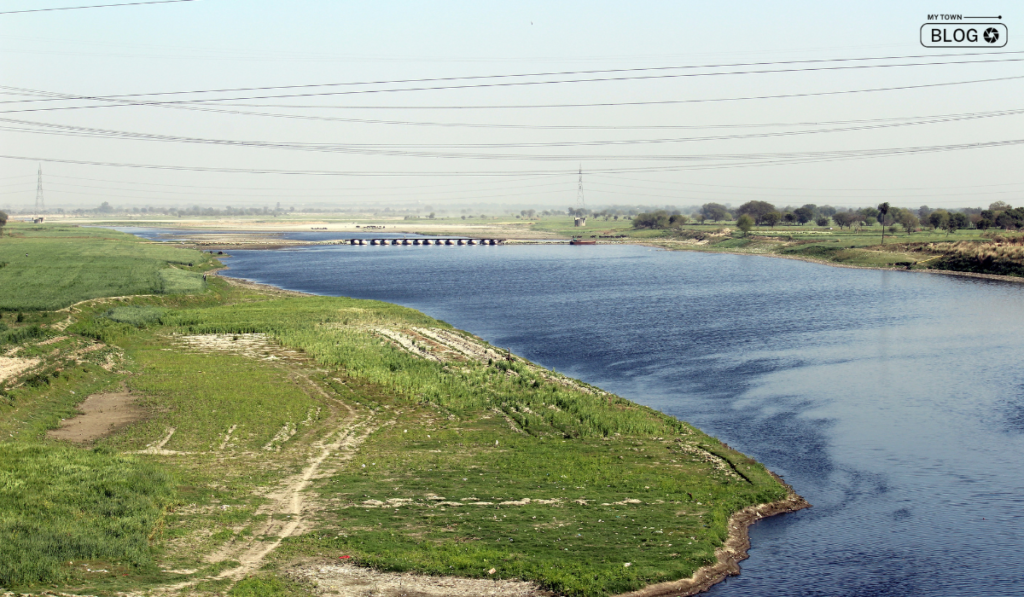
The Yamuna, India’s fourth-largest river, holds a special place in the hearts of the people, not just for its size but also for its religious significance. Stretching over a distance of 1376 kilometres. The Yamuna, also known as Jamuna, weaves a tale of spirituality and natural grandeur.
This revered river, bearing the alternate name Jamuna. Finds its origins at the Yamunotri glacier, nestled in the shadow of the Banderpoonch peak in the Uttarkashi district of Uttarakhand. Along its course, the Yamuna is joined by a network of tributaries. Including the Hanuman Ganga, Sasur, Hindon, Sharda, Giri, Rishiganga, Chambal, Betwa, Ken, Sindh, and Tonnes rivers, each contributing to its majestic flow.
Originating from the Yamunotri Glacier in the Uttarkashi district of Uttarakhand. The Yamuna River meanders through multiple states, including Himachal Pradesh, Haryana, Delhi, Uttarakhand, and Uttar Pradesh. Beyond its role as a geographical entity. The Yamuna holds a significant place in the cultural and spiritual fabric of India, making it not just a river but a symbol of devotion and reverence.
Narmada River
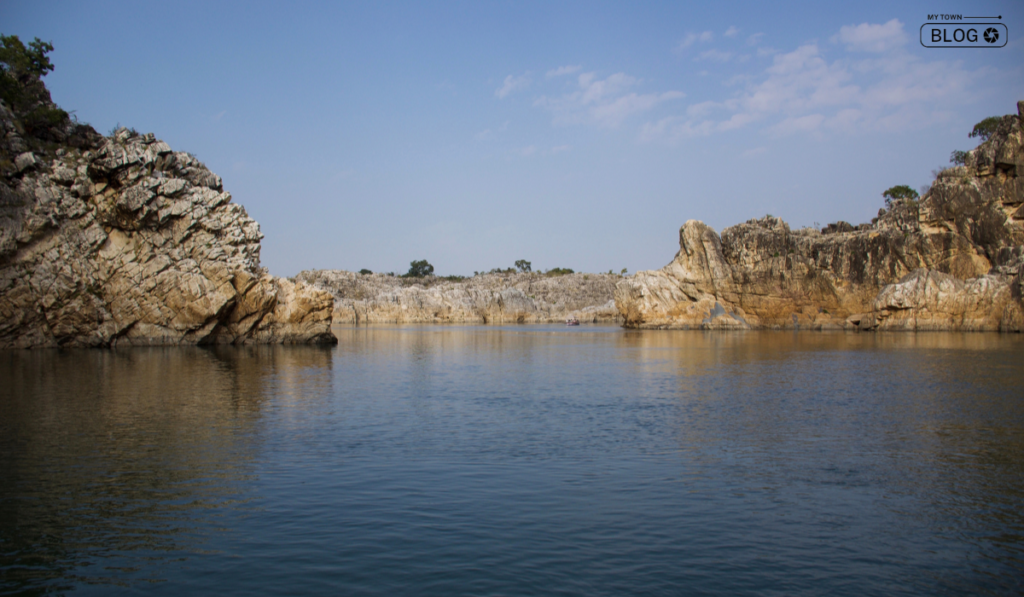
The Narmada River, known as both Rewa and Nerbudda, holds a place of profound reverence in the hearts of millions. It is regarded as one of the holiest rivers in India and is counted among the country’s seven sacred waterways for Hindus.
Often referred to as the Life Line of Madhya Pradesh and Gujarat. The Narmada River stretches over a substantial distance of 1312 kilometres, making invaluable contributions to the well-being of both states. While it ranks fifth in terms of size among Indian rivers, its significance transcends mere dimensions.
The Narmada River originates near Amarkantak in the state of Madhya Pradesh. Commencing a remarkable journey that ultimately culminates in its waters gracefully flowing into the Arabian Sea. This river’s sacred waters have not only quenched. The physical thirst of communities but also nourished the spiritual souls of those who dwell along its banks. The Narmada River stands as a testament to the intertwining of nature, culture, and spirituality in the diverse tapestry of India.
Indus River

The name India itself is intricately linked to the Indus River. Which served as the cradle of the Indus Valley civilization, one of the world’s earliest urban civilizations. This river, steeped in historical significance, flows into Pakistan, covering a remarkable total distance of 3180 kilometres.
However, when we consider its course within the borders of India. The Indus River covers a distance of 1,114 kilometres, making it the sixth-largest river in the country. The Indus River is fed by a network of vital tributaries. Including the Jansker, Soan, Jhelum, Chenab, Ravi, Sutlej, and Beas rivers, each contributing to its majestic flow.
The origins of the Indus River can be traced to the towering peaks on the northern slopes of Mount Kangrinboqe in Tibet, near Lake Manasarovar. As it journeys through the rugged landscapes of India. The Indus River is associated with the cities of Leh and Skardu before eventually merging its waters with the Arabian Sea.
Beyond its physical course, the Indus River continues to flow through the annals of history. Symbolising the enduring legacy of ancient civilizations and the geographical tapestry of the Indian subcontinent.
Brahmaputra River
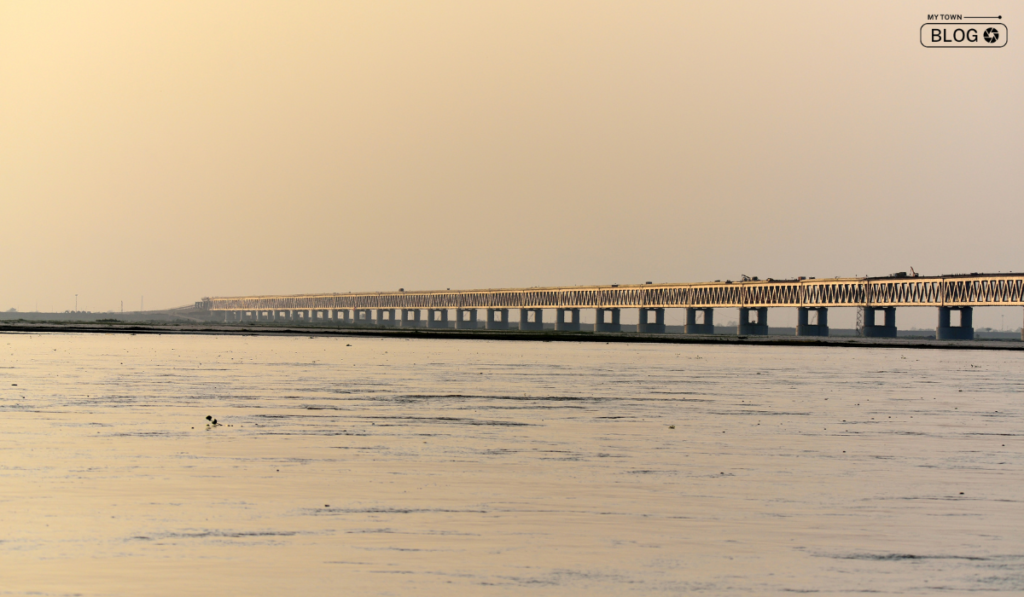
The Brahmaputra River, a majestic watercourse that originates from the Mansarovar Mountains, is the second river that springs from these towering peaks. Its journey begins at the Ansi Glacier. Situated near the pristine Lake Mansarovar in Tibet, China, infusing it with an aura of mystique and grandeur. This river, with a total length of 2900 kilometres. Weaves a remarkable tale as it winds its way through varied landscapes.
However, when it enters the Indian subcontinent, its course within India covers a distance of 916 kilometers. The Brahmaputra, known as the Yarlung Tsangpo River in China. Makes its way into India through the state of Arunachal Pradesh, marking the beginning of a journey that shapes the geography and culture of the region.
The Brahmaputra River’s significance extends beyond its meandering course. It is the lifeline of diverse ecosystems, including the renowned Kaziranga National Park, which thrives on its banks. Additionally, this river witnessed the formation of the first island district in India in 2016: Majuli, or Majoli, a river island nestled within the embrace of the Brahmaputra River in Assam.
Mahanadi River
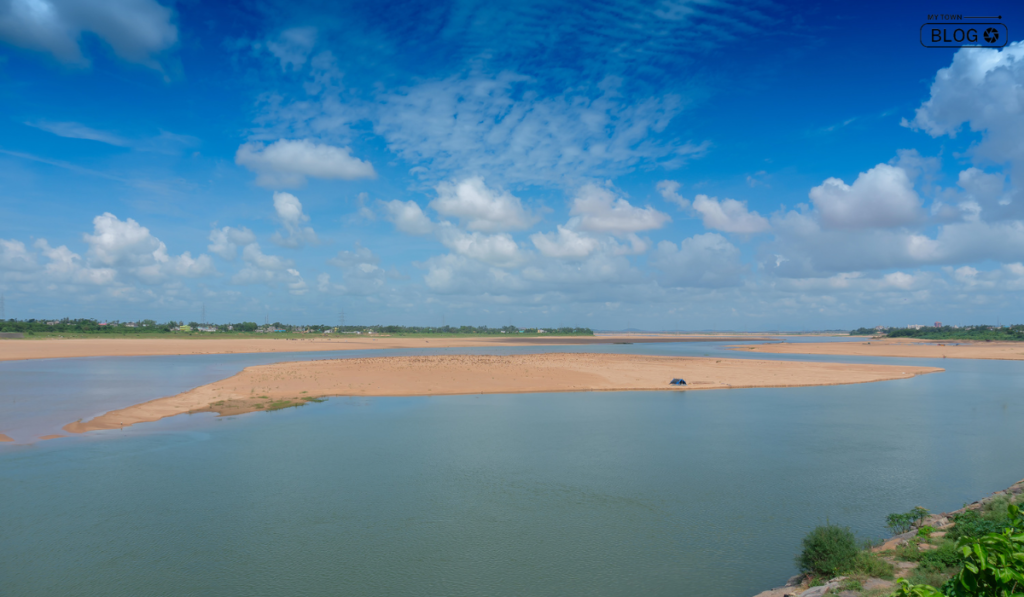
The Mahanadi River, once notorious for its devastating floods, was often referred to as the distress of Odisha. However, a significant transformation occurred with the construction of the Hirakud Dam, altering the course of history for this mighty river.
Today, the Mahanadi River is under careful management thanks to an intricate network of waterways and dam systems. This engineering marvel has brought stability and control to a river once known for its unpredictable behaviour.
Spanning an overall length of 890 kilometres, the Mahanadi River gathers its strength from a multitude of tributaries. Including the Hasdeo, Ong, Seonath, Mand, Ib, Parry River, Jonk, and Telen rivers. This convergence of waterways forms a complex and thriving ecosystem along its course.
The journey of the Mahanadi River begins in Raipur, Chhattisgarh, and meanders through multiple states before finally discharging its waters into the Bay of Bengal. Today, it stands as a symbol of harmonising nature’s forces with human ingenuity. Ensuring a more balanced coexistence between the river and the communities it nurtures.
Kaveri/Cauvery River
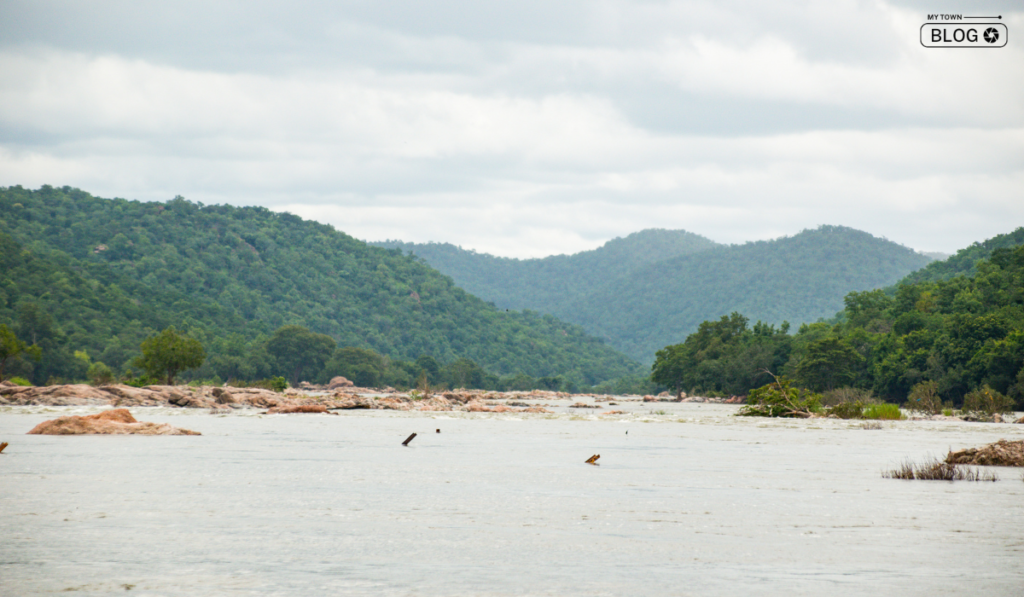
The Kaveri River, known as Cauvery in local parlance, is a revered watercourse in South India. That holds not only spiritual significance but also plays a crucial role in the region’s irrigation system. Despite being the ninth-largest river in India, it stretches over a substantial distance of 800 kilometres, weaving its way through the picturesque landscapes of southern India.
As it flows, the Kaveri River gracefully divides into numerous distributaries. Giving rise to a vast and fertile delta known as the Garden of Southern India. This delta, with its lush greenery and bountiful crops, is a testament to the river’s life-giving properties.
The Kaveri River holds a special place in Tamil literature, celebrated for its pristine waters and sacred aura. Its purity and the sight of its meandering flow have inspired poets and writers for generations.
The journey of the Kaveri River begins in the Tarakaveli region of the Kodagu district in Karnataka, within the Bramagiri hills of the Western Ghats. It then continues its course, ultimately merging its waters with the Bay of Bengal. Beyond being a river, the Kaveri embodies the cultural, agricultural, and natural richness of southern India, making it a source of life, inspiration, and reverence.
Tapti/Tapi River
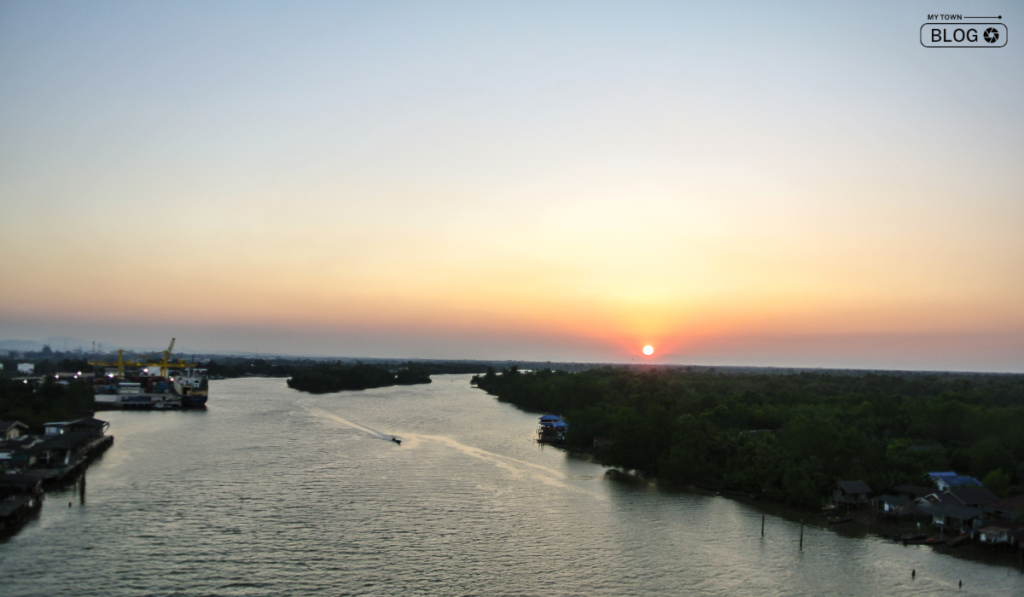
The Tapi River, one of the three rivers that originate on the Indian Peninsula and flow from east to west, paints a unique geographical picture as it meanders through the heart of India. With an overall length of 724 kilometres, the Tapi River stands as one of the most significant waterways in the subcontinent.
This remarkable river finds its origins in the Satpura Range, a landscape of natural beauty and cultural heritage. As it journeys across the Indian heartland, the Tapi River is nourished by a network of tributaries, including the Purna, Gomai, Gilna, Pedi, Panzara, Bray, Anurati, Arna, Vagur, Suki, and Sipna rivers, each contributing to its flow.
The Tapi River’s course leads it to the Gulf of Khambhat, where its waters gracefully merge with the Arabian Sea. Along its journey, the Tapi River touches and nurtures the states of Madhya Pradesh, Maharashtra, and Gujarat, playing a pivotal role in the lives and landscapes of these regions. As a symbol of natural beauty and cultural richness, the Tapi River continues to flow through the tapestry of India’s diverse geography.
Conclusion
Top longest rivers in india are not just watercourses; they are the lifeblood of the nation. From the sacred Ganges to the mighty Brahmaputra, these rivers have carved their way through the landscape, shaping cultures, ecosystems, and histories along their courses. The significance of these rivers goes beyond their geographical dimensions. They are symbols of spirituality, sources of livelihood, and lifelines for countless communities.
FAQs
What is the longest river in India?
The Ganges, also known as the Ganga, is the longest river in India, spanning approximately 2,525 kilometres.
Which river is considered the second-longest in India?
The Godavari River is the second-longest river in India, with a total length of about 1,464 kilometres.
Which river is known as the South Ganges?
The Godavari River is often referred to as the South Ganges due to its cultural and geographical significance in South India.
Which river has a significant cultural and spiritual role in Tamil literature?
The Kaveri River holds a revered place in Tamil literature for its purity and cultural significance.
Which river flows from the Mansarovar Mountains and is the second to do so?
The Brahmaputra River flows from the Mansarovar Mountains, being the second river to originate from this region.
Which two Indian states are primarily drained by the Yamuna River?
The Yamuna River primarily flows through the Indian states of Delhi and Uttar Pradesh.
Which river is famous for the Sundarbans mangrove forest, home to the Bengal tiger?
The Sundarbans mangrove forest, home to the Bengal tiger, is located around the delta of the Ganges, Brahmaputra, and Meghna rivers.
What are some iconic bridges that span the Ganges River in India?
Some iconic bridges in india that span the Ganges River are Howrah Bridge, Munger Ganga Bridge, Ganga Rail-Road Bridge, Mokama Bridge, Sultanganj Bridge, and Vidyasagar Setu. These bridges not only serve as vital transportation links but also contribute to the architectural and cultural heritage of the regions they connect.
